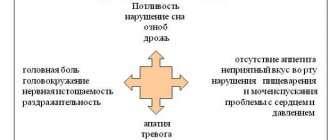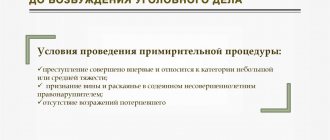With the onset of summer, many citizens intend to engage in recreational fishing. However, when going fishing, few people think about the responsibility established for illegal fishing. Legal regulation of recreational fishing is carried out by Federal Law dated December 25, 2018 N 475-FZ “On recreational fishing and on amendments to certain legislative acts of the Russian Federation.”
In order to protect the environment, preserve aquatic biological resources and their habitat, bans on recreational fishing have been established. In particular, fishing is prohibited:
- using explosives and chemicals, as well as electric current;
- using net tools for the extraction (catch) of aquatic biological resources;
- the method of underwater hunting in places of mass recreation for citizens, using individual electronic means of detecting fish, scuba gear and other self-contained breathing apparatus, as well as using tools for underwater mining (catch) above the surface of water bodies.
Daily fish catch rate, restrictions on species composition and size
The legislation provides for restrictions on the daily rate of extraction of aquatic biological resources. The daily catch rate of fish (quantity, weight) of a certain type, permitted for recreational fishing, is established in the fishing rules. Depending on the region, this norm may vary. For example, in the Altai Territory, Astrakhan, Volgograd and Nizhny Novgorod regions it is 10 kg per person, and in the Moscow region you can catch a maximum of 5 kg of fish.
The rules establish quantitative restrictions on species composition. Thus, it is allowed to catch 50 crayfish in the Krasnodar Territory, 30 in the basins of the Azov and Black Seas. A maximum of three pike perch can be caught in the Altai Territory and Nizhny Novgorod Region, 5 - in the Pskov Region, 2 - in the basins of the Azov and Black Seas. The caught fish must not be smaller than the permissible length (this may vary in different regions). Smaller fish must be released.
Poaching is a threat to nature
The annual losses of the Russian economy from poaching in water bodies in 2004 were estimated, according to the official statement of the Ministry of Internal Affairs, at $1 billion. The depletion of the species composition of the biocenosis also threatens those animals that are not hunted, since the ecological balance is disrupted and food chains are broken. Barbarian caviar production reduces the number of young fish and reduces the population size.
In shallow bodies of water like estuaries, poachers are able to catch tons of live weight without going to sea.
Harvesting fish and marine animals is permitted within the framework of quotas under paid licenses. Catch quotas will be adjusted based on data on the volumes caught in the previous year.
The fishing industry, which provides law-abiding fishermen with labor income, is suffering from a depleted natural environment after poachers caught a large amount of biological resources without paying for a license. This criminal provision is designed to protect the environment from damage and the economy from budget losses.
The law lists the following items as criminal instruments:
- motor boats and boats;
- explosives;
- chemical baits;
- electric fishing rods;
- other methods of mass fishing.
The right of FSB investigators to conduct a preliminary investigation into these crimes is due to the fact that fishing from ships in Russian territorial waters by foreign fishermen who do not have licenses is often carried out in violation of border legislation and requires the efforts of the border service to catch the violators.
Administrative and criminal liability for illegal fishing
Current legislation provides for liability for illegal fishing. Thus, for violation by citizens of the rules regulating fishing, Article 8.37 of the Code of the Russian Federation on Administrative Offenses provides for administrative liability in the form of a fine in the amount of two thousand to five thousand rubles with or without confiscation of the vessel and other equipment for the extraction (catch) of aquatic biological resources.
Illegal fishing is criminalized. Such liability may arise if illegal fishing is committed with the infliction of major damage, with the use of a self-propelled floating vehicle, explosives and chemicals, electric current or other prohibited instruments and methods of mass extermination of fish, in spawning areas or on migration routes to them, as well as on specially protected natural areas.
Commentary on Article 256 of the Criminal Code of the Russian Federation
1. The public danger of illegal harvesting of aquatic animals and (or) plants lies in undermining the environmental safety of Russia and causing damage to flora and fauna.
Parts 1 and 2 comments. Articles define alternative crimes. Part 3 comments. Article establishes the qualified composition of these alternative crimes. All these compounds describe socially dangerous acts that fall into the category of crimes of minor gravity.
2. The main objects of criminal encroachment are: environmental safety of society, ensured by the protection, use, reproduction and provision of environmentally necessary numbers of fish, sea animals, other aquatic animals or commercial plants; environmental safety of living beings inhabiting and using aquatic habitats; viability of aquatic animals and plants.
3. The subject of encroachment is considered to be fish, sea animals, other aquatic animals, and commercial marine plants in a state of natural freedom.
3.1. For fish, see paragraph 3.1 comment. to Art. 257.
3.2. Marine animals include mammals such as fur seals, sea beavers (sea otters, sea otters, Kamchatka beavers), whales, dolphins, seals, walruses, etc.
3.3. Other aquatic animals are aquatic invertebrates (crabs, other crustaceans, sea cucumbers, squids, octopuses, mollusks, etc.).
3.4. Penalty for illegal hunting of waterfowl fur-bearing animals (river beaver, otter, muskrat, muskrat, nutria) occurs in accordance with Art. 258, since these animals are classified as fur-bearing animals.
3.5. Commercial marine plants are plant species intended for mass harvest (including some types of seaweed and grasses) that have consumer value.
4. The objective side of the crime is reflected in the illegal acquisition of the specified items of infringement, i.e. in commercial or recreational fishing, obtaining aquatic invertebrates and marine mammals, including commercial marine plants. In any case, crime is expressed in action.
If an official responsible for observing and implementing the rules for the extraction of aquatic animals and plants fails to act, but withdraws from this despite the real possibility of fulfilling his official duties, his act should be qualified, depending on the form of guilt, as negligence or complicity in the illegal extraction of aquatic animals and ( or) plants by aiding. In the latter case, the guilty person removes obstacles for accomplices to commit a criminal act.
5. The disposition of the article is of a reference-blanket nature. The number of normative legal acts to which the disposition refers the law enforcement officer to properly qualify a socially dangerous act as a crime includes: The Law on Wildlife; Temporary procedure and conditions for issuing permits to foreign legal entities and individuals, Russian enterprises with foreign investments to fish for aquatic biological resources in the exclusive economic zone and on the continental shelf of the Russian Federation, approved. By order of the Russian Federal Fisheries Committee dated May 30, 1994 N 86 (as amended on June 11, 1999) <1>; Red Book of the Russian Federation (subjects of the Russian Federation). ——————————— <1> BNA. 1994. N 11; 1999. N 49.
6. Illegal extraction of objects of criminal encroachment involves the acquisition of such items without proper permission, catching them in excess of the quantity specified in the permit, agreement, ticket, or extraction with expired documents, not in the specified reservoir (on the site), during the prohibited time that is established by fisheries protection authorities separately for each reservoir and items caught. For example, fishing during spawning is prohibited; sturgeon fishing is permanently (all year round) prohibited in the central regions of Russia; any sea animal; catching crabs, crayfish and other aquatic invertebrates - during molting and gestation.
7. A mandatory feature of the objective side of the crime is the place where it was committed - the aquatic environment (territorial waters, inland seas, lakes, rivers, ponds, canals, reservoirs, additional waters).
7.1. Reservoirs and their areas are considered prohibited places, where the fishing or slaughter of fish and aquatic animals is completely or partially prohibited (for example, areas closer than 500 m from bridges, locks, dams, and other hydraulic structures; catching certain species of fish in places where they gather for spawning).
8. Points “c” and “d” part 1 comment. articles specify the crime scene, referring to it: a) spawning sites; b) migration routes to spawning sites; c) the territory of the reserve; d) the territory of the reserve; e) an environmental disaster zone; f) zone of environmental emergency.
8.1. Spawning sites are some areas of the aquatic environment (spawning grounds) where fish spawn mature eggs and milt.
8.2. Migration routes to spawning grounds are the routes of some fish species from their permanent habitats to the spawning grounds, for example, salmon and sturgeon species of fish go from the seas to rivers for spawning, and the river eel, on the contrary, from rivers to the seas.
8.3. About the reserve, see paragraph 6 - 6.1 comments. to Art. 262.
8.4. About the reserve, see paragraph 7 - 7.1 comments. to Art. 262.
8.5. For information about the environmental disaster zone, see paragraph 10.2 of the commentary. to Art. 247.
8.6. For information on the environmental emergency zone, see paragraph 10.3 of the commentary. to Art. 247.
9. Responsibility for the crime provided for in Part 2 occurs in case of illegal hunting of seals, sea beavers or other marine mammals, if committed on the high seas or in a prohibited zone.
9.1. For information on the open sea, see paragraph 4.3 of the commentary. to Art. 252.
9.2. A prohibited zone is a part of natural space (land or water area) where, by force of law, in order to preserve the ecological balance of the natural environment, economic activities are prohibited and other human activities are limited. Such zones are, for example, the migration routes of sea animals and their molting areas.
10. Illegal weapons are considered to be spears, cap nets, venters, cutters, explosives and chemicals, etc. <1>. ——————————— <1> See: BVS RSFSR. 1985. N 2. S. 8 - 9.
11. Illegal methods include the use of self-propelled floating vehicles, explosives or chemicals, electric current, and other methods of mass extermination of aquatic animals and plants. Any (including those listed) methods used for the mass extermination of aquatic animals and plants are a mandatory sign of the objective side of the crime provided for in paragraph “b”, part 1 comment. articles.
11.1. Self-propelled floating vehicles are any structures, devices, structures driven by an engine (catamarans, motor boats, boats, vessels, flying hydraulic devices, etc.). Self-propelled vehicles used to deliver guilty persons to the place of illegal production of aquatic animals (plants) cannot be recognized as means of committing a crime, and therefore do not entail the qualification of a criminal act under paragraph “b” of Part 1.
11.2. Explosives include dynamite, TNT, explosive packages and other devices intended for noise suppression, luring, and driving aquatic animals.
11.3. For information on chemicals, see paragraph 6.6 of the commentary. to Art. 247 (in this case, poisonous and other toxic substances).
11.4. Electric current is the directed (ordered) movement of charged particles: electrons, ions, etc. Conventionally, the direction of electric current is taken to be the order of movement of positive charges <1>. ——————————— <1> See: Soviet Encyclopedic Dictionary. M., 1989. P. 1562.
11.5. The use of explosives, chemicals, and electric current involves their use in the process of direct production of fish, sea animals, other aquatic animals or commercial marine plants. Moreover, the use of these means should lead to the death or create a threat of death of a significant number of aquatic animals (plants).
11.6. Other methods of mass extermination of aquatic animals and plants are blocking off most of the width of the reservoir with fishing gear, driving stakes across the entire width of the reservoir, purging (in some cases), etc.
12. When qualifying a criminal act under part 1 comment. Articles of the circumstances associated with illegal tools and methods must be specified in relation to local conditions (geographical location of the crime scene, objects of encroachment, etc.).
13. Part 3 comment. article involves the commission of illegal actions specified in parts 1 or 2 of the comment. article, but associated with such qualifying circumstances characterizing the method of committing the crime as: a) the use by the perpetrator of his official position; b) commission of a crime by a group of persons by prior conspiracy; c) carrying out a criminal act by an organized group.
13.1. The use of official position is understood as the implementation by a person of behavior contrary to the interests of the service, in particular related to the extraction of aquatic animals and (or) plants, which is, to one degree or another, facilitated by the powers granted to the culprit in the service, as well as the use of his professional status. It does not matter in whose interests the illegal act is committed.
13.2. Abuse of official powers or powers of a person performing managerial functions in a commercial or other organization, resulting in the illegal extraction of aquatic animals (plants), should be qualified under Part 3 of Art. 256 without combination with Art. 285 or 201 (see paragraph 10 of the Resolution of the Plenum of the Armed Forces of the Russian Federation dated November 5, 1998 N 14).
13.3. A preliminary conspiracy of a group of persons involves the commission of a crime by two or more persons who have agreed in advance to jointly commit this crime (see Part 2 of Article 35).
13.4. An organized group is a stable union of two or more persons who have previously united to commit one or more crimes (see Part 3 of Article 35).
14. According to the legislative structure, the elements of crime provided for in parts 1 and 3 of the commentary. articles are formal and material. The crime is over (by composition) at the moment of the beginning of illegal production, pursuit, fishing, regardless of whether aquatic animals or plants were actually obtained (in the formal part of the composition). However, in some cases, the formal element of the crime can develop into a material one - when large damage is caused to aquatic animals and (or) commercial plants. In the latter case, what was done constitutes a completed crime only if there is real damage (see paragraph 17 of the Resolution of the Plenum of the Armed Forces of the Russian Federation dated November 5, 1998 N 14). Legislative construction of the crime provided for in Part 2 of the comment. articles, formal.
15. Material damage is determined in accordance with the Taxes, approved. Decree of the Government of the Russian Federation dated September 26, 2000 N 724, Order of the Ministry of Natural Resources of Russia dated May 4, 1994 N 126, as well as the actual costs of compensation for damage caused to objects of the animal world and their habitat, taking into account losses incurred, including lost profits (see Article 56 of the Law on Animal World).
When establishing major damage, it is necessary to take into account the amount of harvest, the prevalence of animals (plants), their classification into special categories, for example, rare (endangered) species, environmental value, significance for a specific habitat, and other circumstances. In this case, the environmental damage caused should also be taken into account, i.e. damage generally caused to the animal and plant world. Such harm may include, for example, the destruction of spawning grounds, the death of a large number of juveniles, the capture or destruction of animals (plants) listed in the Red Book of the Russian Federation (clause 16 of the Resolution of the Plenum of the Armed Forces of the Russian Federation of November 5, 1998 N 14).
16. Objects of the animal world removed from the natural environment in violation of the legislation of the Russian Federation are confiscated free of charge or confiscated from the owner and returned to their habitat. If the physical condition of the animal does not allow its return to its habitat, it is subject to sale in the manner established by the civil legislation of the Russian Federation, with compensation to the state for damage caused to the animal world by illegal seizure. If it is impossible to seize illegally obtained products, their value is recovered from the perpetrators (see Article 56 of the Law on Wildlife). Instruments and means of crime belonging to the perpetrator and (or) used for the direct commission of this crime are considered as material evidence and can be confiscated on the basis of Part 3 of Art. 81 of the Criminal Procedure Code of the Russian Federation. Amounts received from the sale of illegally obtained items of criminal encroachment are not subject to offset against damages (see paragraph 6, paragraph 16, paragraph 19 of the Resolution of the Plenum of the Armed Forces of the Russian Federation of November 5, 1998 N 14).
17. Illegal production of fish and aquatic animals raised by various enterprises and organizations in specially constructed or adapted reservoirs, or the taking of fish and aquatic animals caught by these organizations should be qualified as theft of someone else’s property (clause 18 of the Resolution of the Plenum of the Armed Forces of the Russian Federation dated November 5, 1998 N 14).
18. Reducing the amount of compensation for damage caused is allowed only in exceptional cases, depending on the property status of the offender established by the court, provided that the crime was not of a mercenary nature (paragraph 2 of paragraph 11 of the Resolution of the Plenum of the USSR Supreme Court No. 1), and in other cases - not was intentional (paragraph 5, paragraph 20 of the Resolution of the Plenum of the Armed Forces of the Russian Federation of November 5, 1998 N 14). When identifying selfish environmental crimes, preliminary investigation bodies and courts, in order to ensure compensation for material damage, must seize (seize) funds received from the sale of illegally acquired products, as well as the illegally acquired products themselves (animal, plant, other organic world).
19. The subjective side of the crime is characterized by guilt in the form of direct intent. The guilty person realizes that he is illegally obtaining the items of infringement, and wants this in a certain or indefinite quantity. In some cases, illegal harvesting of aquatic animals and (or) plants, which caused major damage, may be committed with indirect intent. The motives and goals for qualifying an act as a crime do not matter, but, as a rule, are taken into account when assigning punishment.
20. The subject of illegal harvesting of aquatic animals (plants) is a sane individual who has reached the age of 16 at the time of the commission of the crime. Along with private individuals, subjects can be officials and other persons responsible for their service - captains of fishing and hunting vessels, inspectors of fisheries protection authorities, etc. Criminal acts of officials carried out using their official position must be qualified under Part 3 of Art. 256 (clause 10 of the Resolution of the Plenum of the Armed Forces of the Russian Federation dated November 5, 1998 N 14).
20.1. The actions of persons who promise in advance to acquire objects of an environmental crime obtained through criminal means or who systematically acquire them from the same offender must be qualified as complicity in a crime in the form of aiding and abetting (clause 8 of the Resolution of the Plenum of the Armed Forces of the Russian Federation of November 5, 1998 N 14).
Punishment for illegal extraction (catch) of aquatic biological resources
Criminal liability for fishing arises in accordance with Article 256 of the Criminal Code of the Russian Federation. Major damage is damage caused to aquatic biological resources exceeding one hundred thousand rubles. Anyone guilty of illegal fishing may be subject to a fine in the amount of three hundred thousand to five hundred thousand rubles, compulsory labor for up to 480 hours, correctional labor or imprisonment for up to two years.
If this crime is committed by a group of persons by prior conspiracy or by an organized group, or when especially large damage is caused, the perpetrators face a fine in the amount of five hundred thousand to one million rubles or imprisonment for a term of two to five years. Moreover, in accordance with criminal law, damage exceeding two hundred and fifty thousand rubles is recognized as especially large damage.
If you need a qualified and experienced lawyer in administrative and criminal matters, contact the Kirpikov and Partners center.
How is a crime proven and punished?
The subjective side of the crime is that the poacher is aware of the lack of the right to catch fish or other aquatic fauna (crabs, sea cucumbers) in excess of the permitted volume or outside the permitted area. If the inspection detects people on a body of water or on its shore during a period when fishing is prohibited there, and there are signs that people have arrived for fishing, this gives grounds to check the purpose of their presence on the water or near the water.
To record the fact of withdrawal of extracted resources, video recording can be used; video and photography also record the characteristic features of the equipment: the license plate of a car, boat, or other vehicle.
Forensic examinations in cases of fishing of biological resources include determining the type and characteristics of fishing gear. The expert report must describe the tool, which will make clear its structure, material, production method (industrial or handicraft) and suitability for use.
Homemade nets and electric fishing rods prove criminal intent especially clearly, since prohibited fishing gear is not sold in stores. The weapon of crime and evidence are often fishing nets and their varieties: venteri, “screens”, etc. Another way of illegally obtaining fish is the use of fishing substances, which contain appetite stimulants for water inhabitants.
Sanctions under 256 of the Criminal Code of the Russian Federation reach a million rubles fine and five years in prison. The application of penalties usually includes the confiscation of captured aquatic life and animals. In order to determine damage, taxes are applied - prices per unit of production, which are approved by the government. For prosecution, the number of heads in the catch is counted and multiplied by the dachshund for each species. The resulting amount is collected from the convicted person into the budget. Hunting for marine mammals is also prosecuted under Article 256 of the Criminal Code, unlike poaching on land
As punishment for this act, the Criminal Code provides:
- Fine.
- Correctional work.
- Deprivation of liberty.
Additional punishment in the form of deprivation of the right to hunt in Article 256 of the Criminal Code is prescribed only in part 3, but can be imposed by the court (usually assigned) under the first two parts.
If a group of poachers receives a sentence under Part 3, then a new tort before the expiration of the conviction will be considered as a recidivism.
Also, Part 3 is subject to application if illegal fishing was carried out by an official using his position or the damage exceeded the amount of 250 thousand rubles. Such damage occurs, for example, when catching 30 sturgeon or 200 salmon; for other types it is determined according to the above-mentioned prices.









